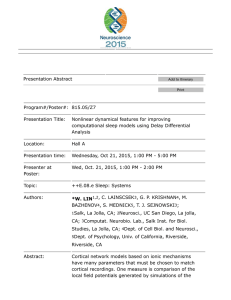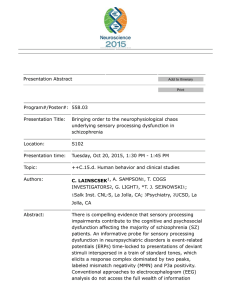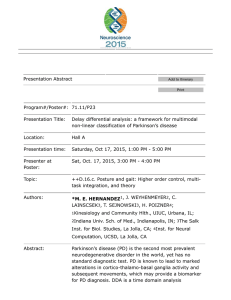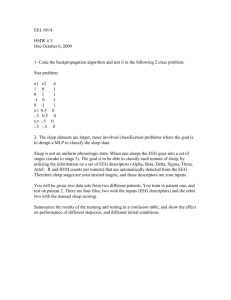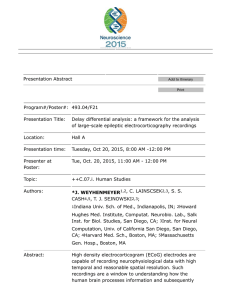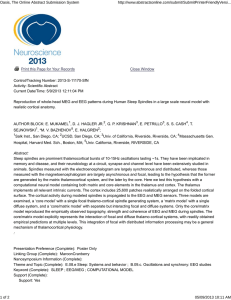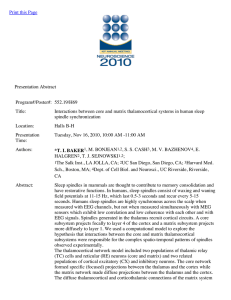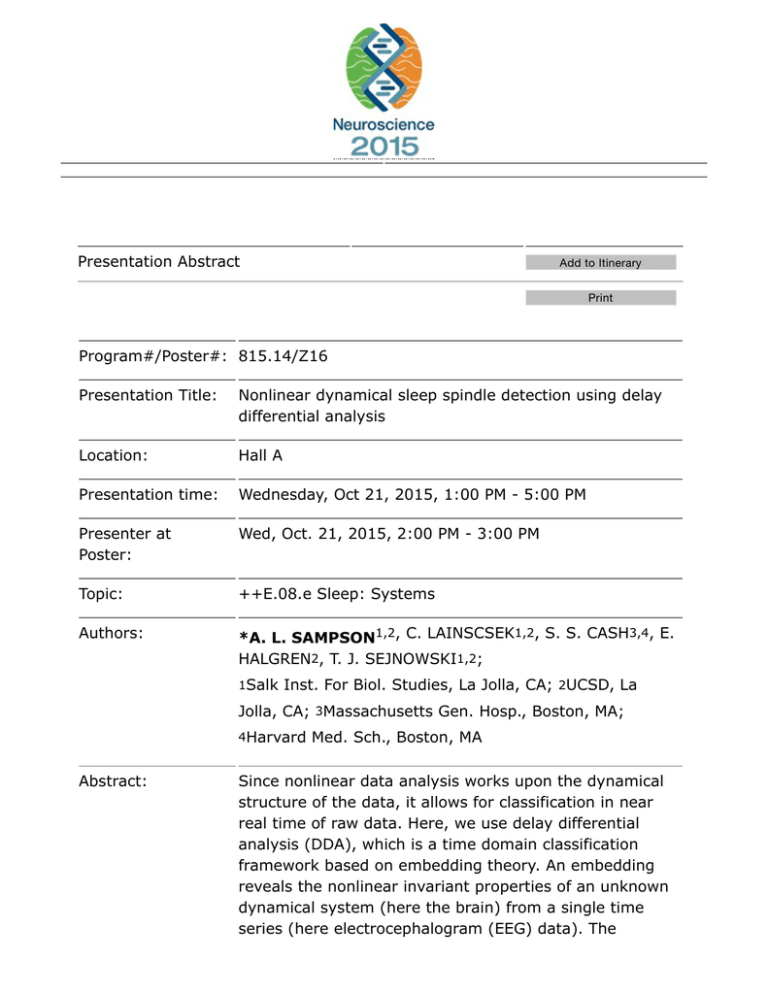
Presentation Abstract
Add to Itinerary
Print
Program#/Poster#: 815.14/Z16
Presentation Title:
Nonlinear dynamical sleep spindle detection using delay
differential analysis
Location:
Hall A
Presentation time:
Wednesday, Oct 21, 2015, 1:00 PM - 5:00 PM
Presenter at
Poster:
Wed, Oct. 21, 2015, 2:00 PM - 3:00 PM
Topic:
++E.08.e Sleep: Systems
Authors:
*A. L. SAMPSON1,2, C. LAINSCSEK1,2, S. S. CASH3,4, E.
HALGREN2, T. J. SEJNOWSKI1,2;
1Salk
Inst. For Biol. Studies, La Jolla, CA; 2UCSD, La
Jolla, CA; 3Massachusetts Gen. Hosp., Boston, MA;
4Harvard
Abstract:
Med. Sch., Boston, MA
Since nonlinear data analysis works upon the dynamical
structure of the data, it allows for classification in near
real time of raw data. Here, we use delay differential
analysis (DDA), which is a time domain classification
framework based on embedding theory. An embedding
reveals the nonlinear invariant properties of an unknown
dynamical system (here the brain) from a single time
series (here electrocephalogram (EEG) data). The
embedding in DDA serves as a low-dimensional nonlinear
functional basis onto which the data are mapped. Since
the basis is built on the dynamical structure of the data,
preprocessing of the data is not necessary, and the low
dimensionality removes the risk of overfitting. A model
that was trained on a single EEG channel from one
subject can be applied to a wide range of data from
different subjects, channels, and recording systems.
Given these desirable properties, DDA is ideally suited to
the problem of sleep spindle detection. Sleep spindles
are 11-17 Hz oscillations recorded in the EEG during
stage 2 sleep. As sleep spindles are thought to arise
from the activity of thalamocortical circuitry, they have
become a subject of study for their potential roles in
memory consolidation and other cognitive functions. In
light of their potential importance, a method for reliably
identifying spindles in real time is needed. DDA analyses
were applied to intracranial recordings from patients with
intractable epilepsy and compared to traditional wavelet
methods. As a bridge between these two methods, an
additional DDA classifier was built on simulated data
(noise-diluted harmonics) to detect frequency bands.
One single set of DDA parameters can be used for 15
tested recordings. The mean area under the receiver
operating characteristic curve is 0.75. DDA is a powerful
method for improving the sensitivity of EEG analyses to
transitory time series features that does not rely on any
post-hoc adjustment of outputs or tailoring to individual
subjects.
Lainscsek, C. Sejnowski, T.J. Delay Differential Analysis
of Time Series, Neural Computation, 27, 594-614, 2015
Disclosures:
A.L. Sampson: None. C. Lainscsek: None. S.S. Cash:
None. E. Halgren: None. T.J. Sejnowski: None.
Keyword (s):
SLEEP
EEG
NONLINEAR DYNAMICS
Support:
ONR (MURI award N000141310672)
Swartz Foundation
Howard Hughes Medical Institute
Note: When adding items to your Itinerary, please click "Add Checked Selections to
My Itinerary" on EACH page of your search results.
At the Meeting
Sessions/Events
Abstracts
Registration
Hotel/Travel
Exhibits
Fellowships, Awards, and Prizes
Frequently Asked Questions
CME
Access the SFN Member Center
OASIS Technical Support.
Monday - Friday, 9 am - 5 pm CT
Phone: 1-217-398-1792
Email: OASIS Helpdesk
Leave OASIS Feedback
The Online
Abstract
Submission and
Invitation
System
© 1996 - 2015
Coe-Truman
Technologies,
Inc. All rights
reserved.

